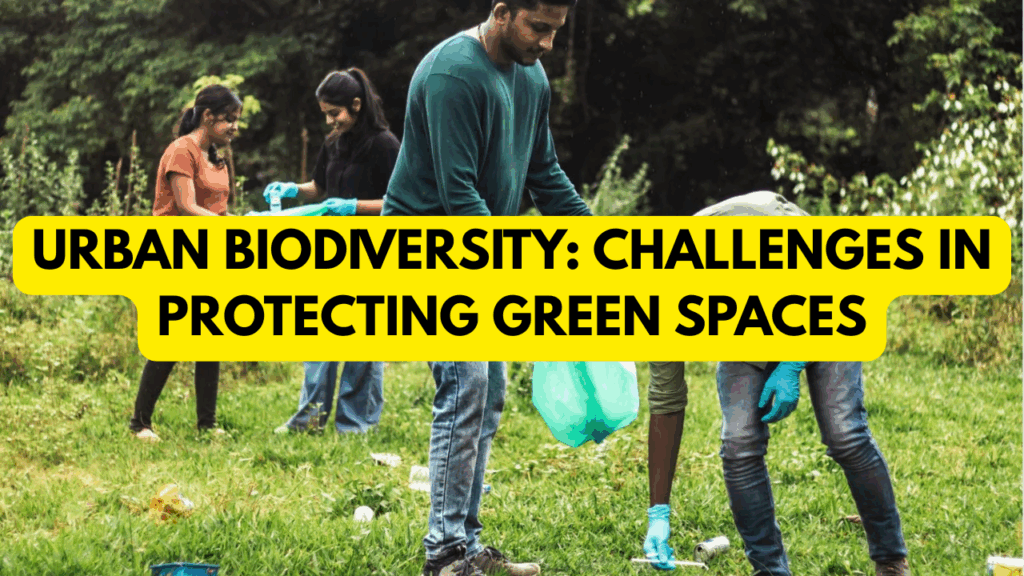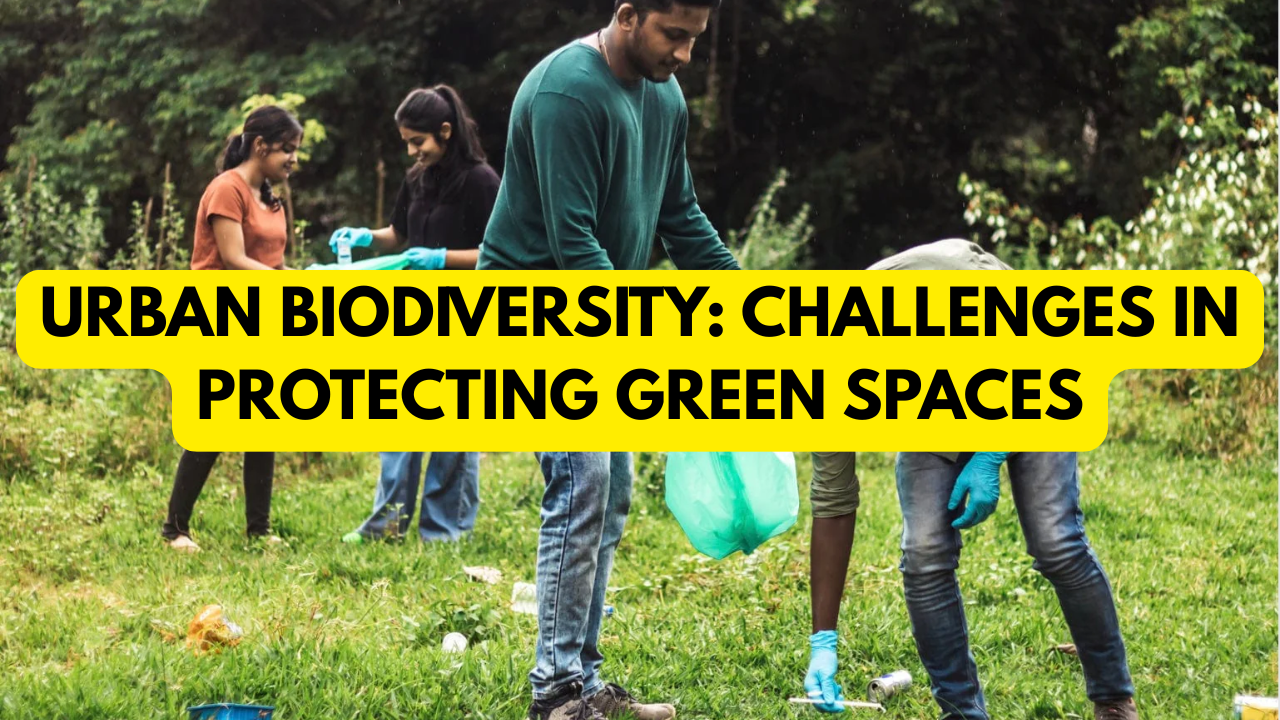
Cities are expanding at an unprecedented rate, transforming landscapes and putting immense pressure on natural ecosystems. In the process, urban biodiversity—the variety of plants, animals, and ecosystems within city environments—faces growing threats. Green spaces such as parks, wetlands, community gardens, and urban forests are critical for maintaining ecological balance, reducing pollution, and supporting human well-being. However, protecting these spaces amidst rapid urbanization has become one of the greatest environmental challenges of our time.
Importance of Urban Green Spaces
Urban green spaces are not just recreational areas; they are vital ecological assets. They perform several essential functions:
- Environmental Benefits – Improve air quality, regulate temperatures, recharge groundwater, and reduce flooding.
- Biodiversity Habitats – Provide shelter for birds, insects, small mammals, and plant diversity.
- Health and Well-being – Reduce stress, promote physical activity, and enhance mental health.
- Climate Resilience – Help cities adapt to the impacts of climate change through carbon sequestration and heat reduction.
Key Challenges in Protecting Urban Biodiversity
1. Rapid Urbanization and Land Use Change
- Expansion of cities often comes at the cost of forests, wetlands, and agricultural lands.
- Encroachments and infrastructure projects frequently destroy habitats.
2. Pollution and Waste Management
- Air, water, and soil pollution degrade urban ecosystems.
- Plastic and chemical waste threaten aquatic and terrestrial biodiversity.
3. Habitat Fragmentation
- Small patches of green spaces are often disconnected, reducing their ability to support diverse species.
- Roads and urban structures act as barriers for wildlife movement.
4. Lack of Awareness and Policy Implementation
- Many citizens undervalue the ecological importance of green spaces.
- Weak enforcement of environmental regulations leads to unchecked exploitation.
5. Climate Change Impacts
- Rising temperatures, changing rainfall patterns, and extreme weather events affect urban ecosystems.
- Invasive species are increasingly replacing native biodiversity.
Legal and Policy Framework
National and International Measures
- Convention on Biological Diversity (CBD, 1992) – Encourages urban biodiversity integration into planning.
- National Biodiversity Act (2002, India) – Mandates biodiversity management committees even in urban areas.
- Environmental Impact Assessment (EIA) – Requires assessment of projects that affect ecosystems.
- Urban Planning Regulations – Green belts, eco-sensitive zones, and municipal green plans are part of city master plans.
Local Initiatives
- Community Biodiversity Registers (CBRs) – Recording species at the city or neighborhood level.
- Eco-restoration Projects – Restoring wetlands, riverfronts, and degraded urban forests.
- Public Participation – Involvement of citizens, NGOs, and resident groups in urban greening.
Case Studies: Urban Green Initiatives
- Delhi’s Ridge Area – Despite encroachments, remains a critical green lung for the capital.
- Hyderabad’s Lake Restoration – Revival of urban lakes has improved biodiversity and reduced flooding.
- Bengaluru’s Lalbagh and Cubbon Park – Serve as biodiversity hotspots amidst a concrete jungle.
- Singapore’s Green Plan 2030 – A global model with green roofs, vertical gardens, and biodiversity corridors.
Comparative Table of Challenges and Solutions
| Challenge | Impact on Urban Biodiversity | Possible Solutions |
|---|---|---|
| Urbanization & Encroachment | Habitat destruction | Strict zoning & eco-sensitive planning |
| Pollution | Degrades ecosystems | Waste management & eco-friendly infrastructure |
| Habitat Fragmentation | Decline in species diversity | Biodiversity corridors, connected parks |
| Lack of Awareness | Neglect of green spaces | Environmental education & community engagement |
| Climate Change | Threatens native species | Climate-resilient plantings & conservation |
Overview Table
| Aspect | Key Details |
|---|---|
| Importance of Urban Green Spaces | Improves environment, health, biodiversity |
| Major Challenges | Urbanization, pollution, fragmentation, climate change |
| Key Legal Tools | CBD, Biodiversity Act 2002, EIA, planning laws |
| Community Role | Registers, awareness, participation |
| Case Studies | Delhi Ridge, Hyderabad Lakes, Singapore Model |
Conclusion
Urban biodiversity is a vital yet fragile component of city ecosystems. While green spaces are under constant threat from urban expansion, pollution, and neglect, they are also the key to building sustainable, livable, and climate-resilient cities. Strengthening legal protections, encouraging community participation, and integrating biodiversity conservation into urban planning are critical steps forward. Unless immediate action is taken, the ecological foundations of cities may collapse, affecting both people and nature.
FAQs
Q1. Why is urban biodiversity important for cities?
Urban biodiversity improves air quality, supports mental health, and makes cities more climate-resilient.
Q2. What is the biggest threat to green spaces in cities?
Rapid urbanization and encroachment on natural habitats remain the largest threats.
Q3. How can citizens help protect urban biodiversity?
By participating in community greening projects, conserving water, reducing pollution, and supporting local biodiversity registers.

